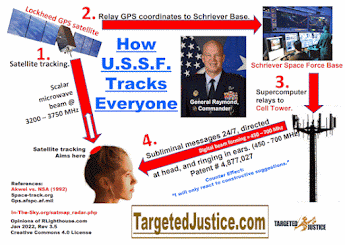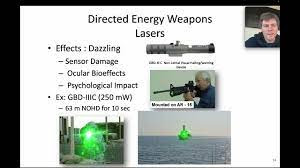Patent No. 4289121 Method for controlling functional state of central nervous system and device for effecting same
Patent No. 4289121
Method for controlling functional state of central nervous system and device for effecting same (Kupriyanovich, Sep 15, 1981)
Abstract
The method consists of subjecting the central nervous system to the effects of rhythmic audio and light signals which are applied simultaneously in accordance with biorhythms corresponding to a stable state of the central nervous system. After setting the initial light and audio signals, the frequency, amplitude and duration of the rhythmic light and audio signals are varied in synchronism according to frequency variations of the biorhythms. The method is carried out with the aid of a device comprising a light pulse pacemaker, an audio pulse pacemaker, pulse frequency, duration and amplitude setting units, modulators of signals produced by the pacemakers, which are controlled by the setting units, and a switch intended to determine the direction of variation of audio and light signals. The device also includes a programming unit to receive information on the state of the central nervous system.
Notes:
Method
for controlling functional state of central nervous system and device for effecting
same. Filed September 1979, granted September 1981. Another entrainment device
using audible and/or visual methods. Granted to a person in Soviet Union. Shows
Soviets researched control through entrainment and 'biorythms' in late 1970s
also.
FIELD
OF THE INVENTION
The present invention relates to medicine and, more particularly, to a method
and device for controlling the functional state of the central nervous system.
The invention is effective in inducing sleep or making it deeper, as well as
in raising the level of wakefulness; it also helps against insomnia and in cases
of abnormal sleepiness.
BACKGROUND OF THE INVENTION
The rapid development of science and technology, the information explosion and
the necessity to keep pace with the times all have had a tremendous impact on
the central nervous system. The resultant stresses almost invariably lead either
to superexcitation or to abnormal sleepiness and strongly affect people's health
and working capacity.
Drugs that are often used in such cases normally contain toxic narcotics. Prolonged
courses of drug therapy may result in habit formation so that the patient has
to be given higher doses or more potent drugs.
A number of attempts have been made to dispense with drug therapy by exposing
the central nervous system to the effects of such physical phenomena as light
or sound. For example, there is known a method which makes use of regularly
repeated light and audio effects, such as the sound of ocean breakers or the
monotonous noises of rain. The method produces inhibition of the cerebral cortex
and sometimes makes a patient fall asleep, but it is not effective enough to
reestablish normal sleeping habits and thus eliminate abnormalities of biorhythms
which cause sleeplessness or, on the contrary, make a person sleepy during the
day.
The method under review largely depends on the psychophysilogic state of an
individual and at times may prove to be ineffective. There have been attempts
to combine the effects of monotonous audio and light signals; although more
effective than the foregoing method, such attempts have not produced consistently
good results. It can thus be inferred that monotonous signals are not the ultimate
solution. It was then found that the action on the central nervous system could
be intensified by varying the frequency, duration and amplitude of signals according
to an electroencephalogram. Unlike monotonous signals, signals with varied parameters
are more effective in altering the biorhythmic pattern and eliminating sleep
distrubances. Yet the positive effect of such treatment cannot be maintained
over a prolonged period of time.
The latter method is effected with the aid of a device comprising a controlled
audio pulse pacemaker, a controlled light pulse pacemaker, and a unit for controlling
the two pacemakers according to variations of bioelectric currents of the brain
recorded during sleep. The device has all the disadvantages inherent in the
method which it is intended to carry out. It must further be pointed out that
none of the known devices of this type are capable of controlling the level
of wakefulness.
SUMMARY OF THE INVENTION
It is an object of the present invention to provide a method for controlling
the functional state of the central nervous system, which would ensure a stable
and prolonged effect on the human organism.
It is another object of the invention to provide a method for controlling the
functional state of the central nervous system, which could be used to rapidly
induce profound sleep.
It is still another object of the invention to provide a method to ensure strict
correlation between the state of the organism and the effects of signals acting
on the organism to change the biorhythms.
It is a further object of the invention to provide a method which could make
it possible to control the degree of wakefulness and eliminate sleepiness.
It is an important object of the invention to provide a device for controlling
the functional state of the central nervous system of both sleeping and wakeful
patients.
The foregoing and other objects of the invention are attained by providing a
method for controlling the functional state of the central nervous system by
exposing a patient to simultaneous effects of a rhythmic audio signal and a
rhythmic light signal and determining the change of the frequency of the biorhythms
in the course of the transition to one of the extreme stable states of the central
nervous syrtem. This is followed by setting an initial light signal and an initial
audio signal and synchronously varying the frequency, amplitude and duration
of the rhythmic light and audio signals within the established intervals of
the frequency variation of the biorhythms. The tonality of the audio signal
and chromaticity of the light signal are varied according to changes of the
intervals.
The invention is based on the established fact that the effects of light and
audio pulse signals are more pronounced if these signals change according to
variations of biorhythms caused by changes in the state of the central nervous
system. The invention stresses the necessity of using signals of varying color
and tonality instead of monochrome and monotonous signals. The color and tonality
of the signals are to varied according to changes of the frequency, amplitude
and duration of the biorhythm, as well as according to the interaction between
the light and audio signals.
The method according to the invention is advantageous in that it is carried
out with due regard for the original psychophysiologic state of the patient
and in that the change of the functional state of the central nervous system
is a reflection of the actual state of the patient. The reason for this lies
in the fact that the rhythmic light and audio signals are directly related to
biorhythms of the organism.
It is expedient that the chromaticity and tonality of the initial signals should
be chosen by the patient so as to make sure that the initial rhythmic signals
closely correspond to the actual psychophysiologic state of the patient. For
example, to reduce the level of wakefulness, one must not start with a red light
signal and a high pitch audio signal if the patient is relaxed. This would only
lead to an unnecessary loss of time because a red light signal and a high pitch
audio signal would first excite the nervous system and raise the level of wakefulness,
after which a change of color and pitch would only bring wakefulness down to
the original level.
Optimum results are achieved by using the visible optical spectrum and pitches
of 50 to 1,500 Hz.
A patient is made to fall asleep by reducing the light wavelength and lowering
the pitch of the audio signal with respect to the initial levels.
The level of wakefulness is rasied by increasing the light wavelength and raising
the pitch of the audio signal with respect to the initial levels.
The method according to the invention is carried out with the aid of a device
comprising a controlled audio pulse pacemaker intended to expose the patient
to the effects of audio signals of a desired frequency, amplitude and duration;
a controlled light pulse pacemaker intended to expose the patient to the effects
of light signals of variable chromaticity, amplitude, frequency and duration;
a pulse repetition setting unit intended to set the pulse repetition frequency
for the light and audio pacemakers; a pulse amplitude setting unit intended
to set the pulse amplitude for the pacemakers; a pulse duration setting unit
intended to set the pulse duration for the pacemakers; modulators in a number
equal to the number of light signals produced by the light pacemaker, their
inputs being separately connected to outputs of the pacemakers, and their outputs
being connected to said pacemakers to synchronously vary the frequency, duration
and amplitude of the light and audio signals; a switch intended to switch in
a predetermined order the modulators and units for setting the chromaticity
of light signals and tonality of audio signals; a control unit intended to control
said setting units by producing signals to control the pattern of varying the
functional state of the central nervous system, depending on the task to be
performed, which is either to produce a soporific effect or to raise the level
of wakefulness; and a programming or storage unit intended to receive information
on changes of the biorhythm according to a change state of the central nerous
system, which is connected to the pulse frequency, amplitude and duration setting
units of the light and audio pacemakers and serves to produce a signal whereby
the frequency, amplitude and duration of pulses are changed by the respective
setting units, depending on the biorhythm frequency within specified time intervals.






Comments